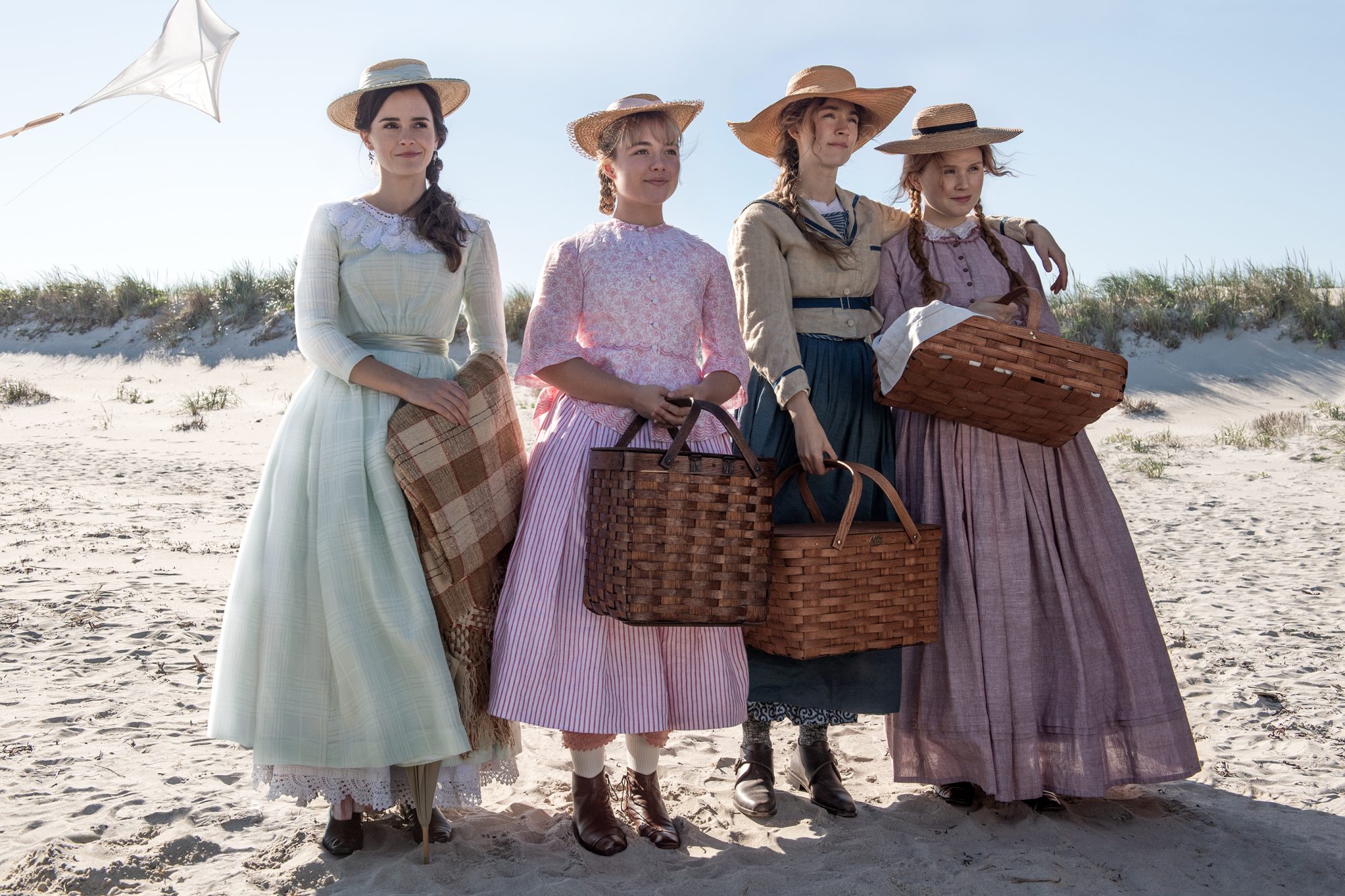Greta Gerwig’s new film ‘Little Women’ has been hailed as a faithful, heart-warming adaption of the original novel. Gerwig’s hyper-attention to detail meant that everything, from the furniture to the fashion held hidden meaning.
Under Oscar nominee Jacqueline Durran’s watchful eye, the characters, particularly the four March sisters, flourished through what they chose to wear. Each having a different set of signature colours (Meg with greens, Jo with reds, Amy with blues, and Beth with more subdued pinks) which set them apart aesthetically, however still coordinate when the sisters unite. Book fans will note that these colours correspond with the colours of the notebooks given to each girl by Marmee, a clever callback by Durran. Marmee herself mixes the colour palettes of her daughters in her own wardrobe, less of a reflection of her personality and more of her hectic life as a mother and carer.
Her girls though, flourish through their clothes. We track Jo’s relationship with Laurie through their consistently similar wardrobes (indeed Durran states that she intended it to appear as if the two share clothes) and at her most unorganised moments, writing her book at the film’s climax she wears a mish-mash of textures and styles. In her final meeting with her publisher, Jo adopts a more masculine style of dress, adorned with hat and necktie in order to assert her validity as a female author in a man’s world. And then, a careful choice, in the final scene Jo comes full circle to reassert her femininity in a light pink, casual dress (reminiscent of the colour of Beth’s wardrobe). Jo’s androgyny is reflected impeccably well through her outfits, and the shifts from more masculine to more feminine dress correspond perfectly with her story.

Amy’s style of dressing is by far the most beautiful throughout the film- her appreciation for her femininity and her desperation to fit in in Paris sees her flitting from one outfit to the next in an effortless way. Always wearing a hoop skirt and corset (unlike Jo who never wears either), Amy embodies the ideal young maiden, the belle of the ball. Particularly interesting is the simplicity of her gowns- she often favours simple details or a singular statement piece over complicated ruffles and feathers. In the painting scene with Laurie, we see her go from dressed rather plainly, in a sky blue skirt, clean white shirt, and painting apron. However, when she removes the apron and puts on her capelet- a beautiful cream with chinoiserie-like embroidering- she transforms from an extremely practical painter to a stunning girl in love. These small but impactful elements of her costumes show that while Amy wants the finer things and to fit in with Parisian society, she also wants to be practical as her mother taught her. By wearing clothes that serve multiple functions, she honours this.

But why does Amy forgo the ruffles and feathers that we see for example at Meg’s debutante-esque ball? Meg’s gown, donated to her by another girl, is a chance for her to pretend to be someone else, and this gown represents the height of the finery Amy desires. It’s brimming with detail- ruffles, ribbons, accessories. A beautiful assault on the eyes, Meg feels wonderful in it- until she sees Laurie. When she asks for his opinion, he upsets her by saying he doesn’t like the finery she so cherishes, saying that it’s immodest and not like the family she comes from. Amy’s preference for more effective details gains the same luxurious effect, whilst still maintaining her modesty (often her day gowns have high necks and long sleeves). She strives to be more than just her dresses, educating herself and developing her love of painting alongside enjoying her sumptuous fabrics and rich outfits, and that’s why Laurie becomes attracted to her, unlike say a girl from the ball who would have similar social standing.

Durran’s attention to historical detail is unlike no other- Gerwig was concerned, for example, about the bright fabrics used, notably the lime green of one of Meg’s scarves and her pink ballgown. However, Durran discovered that new dyes had recently come into fashion and people at the time were able to experiment with bright colours, a far cry from how we imagine girls dressing in Victorian times. At the end of the day however, they are just girls, and Meg, Jo, Amy, and Beth seem to wear what they like, when they like.

